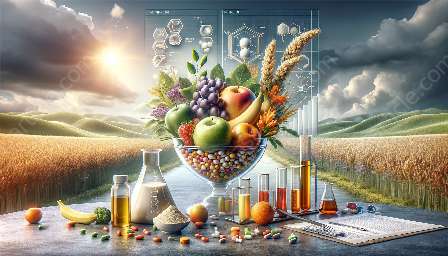Understanding the intricate relationships between nutrients and antioxidants is crucial in nutrition science. This topic cluster aims to delve into the synergistic effects and benefits of their interactions, shedding light on the importance of consuming a balanced diet rich in essential nutrients and antioxidants.
Nutrients and Antioxidants: A Dynamic Relationship
Nutrients play a vital role in maintaining overall health and well-being, while antioxidants are renowned for their ability to combat oxidative stress and protect cells from damage. When these two elements interact, a dynamic relationship unfolds, impacting various physiological processes.
Roles of Essential Nutrients
Essential nutrients, including vitamins, minerals, and macronutrients, are indispensable for the proper functioning of the human body. They are involved in energy production, immune function, tissue repair, and numerous other metabolic pathways.
Antioxidants: Guardians of Cell Health
Antioxidants, such as vitamin C, vitamin E, and selenium, among others, serve as the body's defense against oxidative damage caused by free radicals. By neutralizing these harmful molecules, antioxidants help in preventing chronic diseases and slowing down the aging process.
Unlocking Synergistic Effects
Research has shown that the interactions between nutrients and antioxidants can lead to synergistic effects, amplifying their individual benefits. For example, vitamin C enhances the absorption of non-heme iron, while vitamin E works synergistically with vitamin C to provide enhanced protection against oxidative stress.
Enhanced Absorption and Bioavailability
Some nutrients, such as vitamin D, are known to enhance the absorption of certain minerals, like calcium and phosphorus, leading to better bone health. Additionally, consuming foods rich in healthy fats can improve the absorption of fat-soluble nutrients, such as vitamin A, D, E, and K.
Protective Mechanisms
Antioxidants have been found to work in tandem with nutrients to enhance the body's protective mechanisms. For instance, the combination of vitamin C and vitamin E has been shown to provide superior protection against lipid peroxidation, a process that damages cell membranes.
The Importance of a Balanced Diet
Considering the complex interactions between nutrients and antioxidants, it becomes evident that a balanced diet is essential for reaping the full benefits of these interactions. Including a variety of nutrient-dense foods, such as fruits, vegetables, whole grains, lean proteins, and healthy fats, can help ensure adequate intake of essential nutrients and antioxidants.
Optimizing Nutrient Intake
Balancing the intake of macronutrients, such as carbohydrates, proteins, and fats, is crucial for obtaining the necessary energy and building blocks for the body's functions. Moreover, consuming a diverse array of fruits and vegetables provides an assortment of vitamins, minerals, and phytonutrients, further enhancing the protective effects of antioxidants.
Maximizing Antioxidant Benefits
Alongside nutrient-rich foods, incorporating antioxidant-rich sources, such as berries, nuts, seeds, and leafy greens, into the daily diet can significantly contribute to overall health. Antioxidant-rich foods also play a role in reducing inflammation and supporting immune function, further highlighting their synergy with essential nutrients.
Conclusion
The interactions between nutrients and antioxidants are multifaceted and hold significant implications for overall health. Through synergistic effects, enhanced absorption, and protective mechanisms, the combination of a balanced diet rich in essential nutrients and antioxidants can optimize health outcomes and contribute to disease prevention. Embracing the interconnectedness of nutrients and antioxidants is a cornerstone of nutrition science, paving the way for informed dietary choices and optimal well-being.

